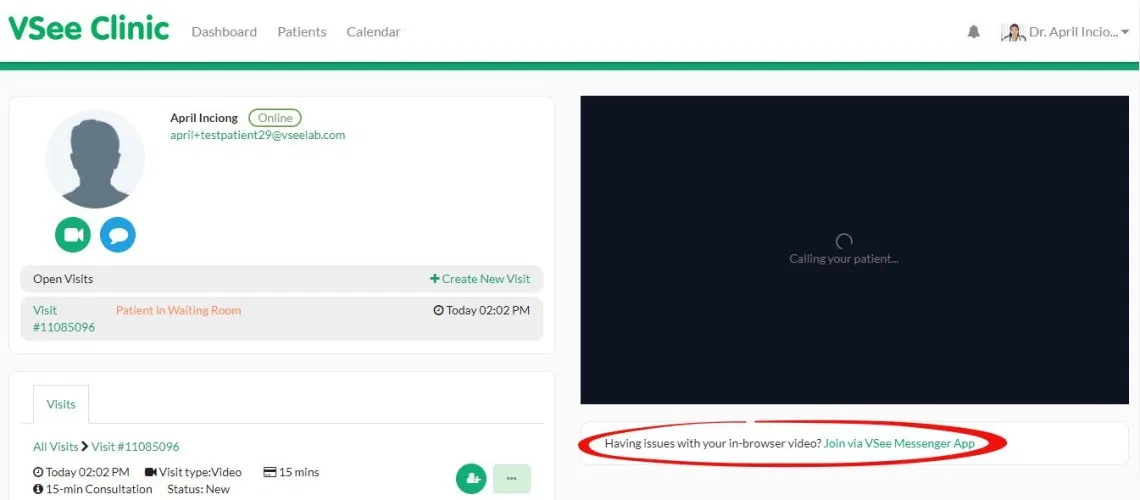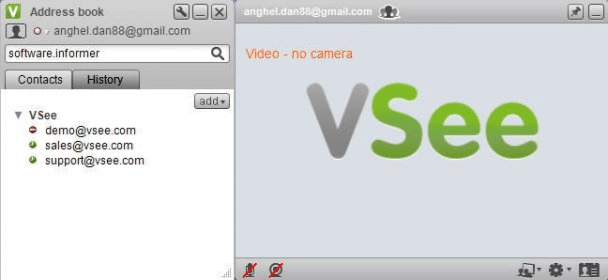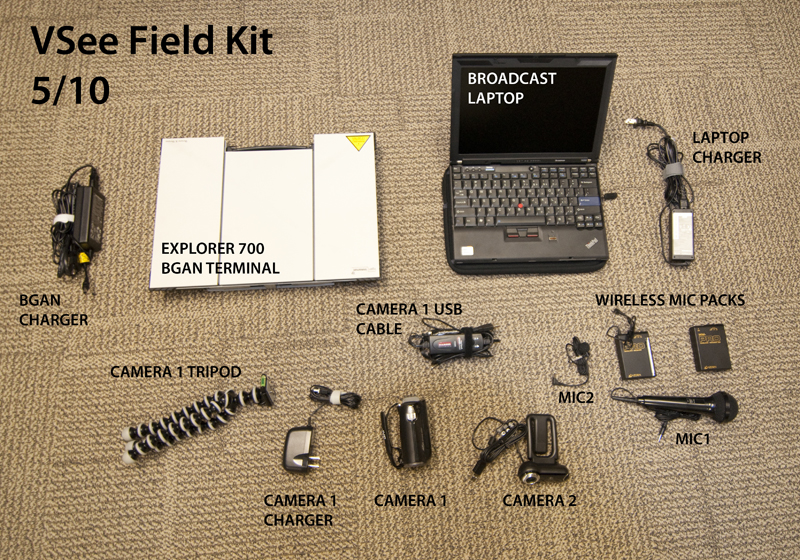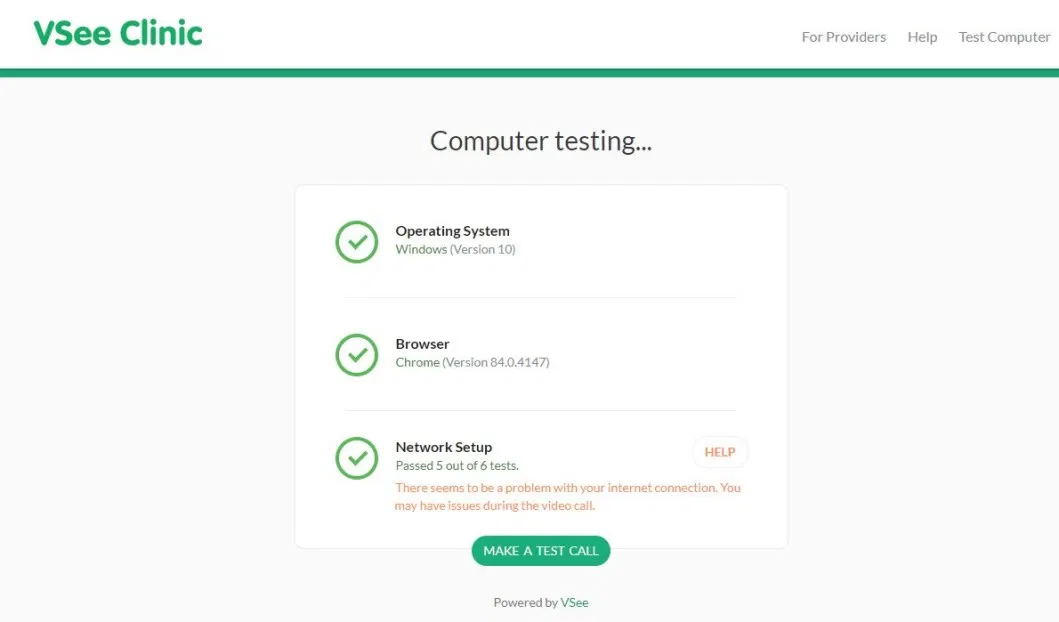We have new features available in this version which will be released this week (ETA 4th Sept 2020).
- Please visit help.vsee.com or call (650) 614-1746. VSee support staff hours is from 6AM-6PM PST (Mon-Fri).
- VSee telemedicine API is a simple way to build secure video chat into your own telehealth platform, or whatever app for mobile, web, and desktop platforms.
VSee 4.9.4 Build 42579 download page. Download vsee.exe free. VSee Size: 18Mb. Downloaded: 1,229 times.
1. New! Additional Languages Available
These languages will be supported in VSee Clinic (web browser only, not available on mobile browser):
- Simplified Chinese
- Traditional Chinese
- Spanish
The Chinese translations are new in this update while the Spanish translation has been supported before and is improved in this release. To try it out, change your default browser language.
The six languages below are also included but will be released as Beta version since not all texts have been accurately translated yet. We will be improving the translations in the next few releases.
- Arabic
- Filipino
- French
- Korean
- Portuguese
- Vietnamese


2. New! In-Browser Calls on Chrome OS (Beta Feature)
Good news for our Chromebook users! With this release, in-browser calls will be supported on Chromebook.
- Your Clinic must have In-browser calling feature enabled.
- Calls via the VSee app are still not supported.
Please note that this is a beta feature and will be continually improved in the next few releases.
3. New! Re-send Appointment Reminder to Patients
For confirmed appointments, VSee Clinic automatically sends these notifications to both provider and patient:
- Appointment confirmation - sent right after the appointment is confirmed.
- Appointment reminder - sent 24 hours (by default) before the actual appointment time.
These notifications are sent via email and/or SMS if the latter is enabled however patients may sometimes miss or lose them due to various reasons (email went to spam or was accidentally deleted).
In this Clinic release, we have added a functionality where providers and admins can manually re-send the appointment reminder to the same patient. To enable this feature for your clinic, please contact help@vsee.com.
The appointment reminder can be resent from the visit record.
The appointment reminder can be resent from the calendar slot.

Build secure video & chat communications right into your own app or website
Looking for an OpenTok alternative or an easy way to integrate video chat into your own application? The VSee Application Programming Interface (API) allows you to easily integrate VSee’s simple, secure video conference and screen share so you can create your own innovative telehealth platform, e-learning portal, or whatever app for mobile, web, and desktop platforms.
For a faster web integration option, get the VSee Clinic. This pre-designed waiting room workflow allows you to embed the waiting room and patient queue as a button right into your website (see image below). How to download microsoft office 2016 for mac.
Individual VSee Clinics embedded into a Provider website
The VSee Web API allows partners to manage their VSee users, check for user presence, as well as send commands to the VSee client to initiate calls, meetings and auto-accept calls from specific users.
VSee requires NO servers and no admin privileges, saving up to 10 times the cost of traditional video conference solutions. VSee is also HIPAA-compliant and supports complex telehealth workflows such as virtual waiting rooms and triage centers.
VSee API is fully supported on Windows, Mac, iOS, and Android to provide the best video communication experience.

VSee API for Telehealth
Build a health portal for virtual doctor visits that includes scheduling and secure one-click video calling. Or have our experts create a customized experience for you with the VSee Telehealth Platform. Custom-build features include:
| HIPAA Video Chat | Wearable / Clinical Device Integration | Patient / Provider Portal |
|---|---|---|
| One-click video calling | FitBit, iHealth, etc | Intake form / PHR |
| EHR screen sharing | Ultrasound, EKG, etc | Call routing/ triage |
| File sharing | Labcorp test visualization | Virtual waiting room |
| Medical device streaming | Point-of-Care labs | EMR SOAP notes |
| Secure IM | ePrescribe | |
| Payments | ||
| MedlinePlus/GoodRx |
How does the VSee API work?

Embed VSee video chat into your app using any programming language of your choice. It is as simple s sending a POST request to VSee API to be able to leverage on our API. Information will be returned to the users in JSON thus allowing it to be easily integrated into any system. Your developers should be able to build a working prototype in just a few hours.
VSee vs other video conferencing APIs
| Companies | Platforms | Remarks |
|---|---|---|
| OpenTok | Browser, iOS, Android | API mainly server implementation |
| Vidyo | PC, Mac, iOS | Versatile API, not fully specified |
| Skype | URI only: Windows 8 apps, browser, Android, iOS | URI does not provide for user management |
| WebRTC | Browser | Still in development as a standard, more complicated to implement |
| VSee | PC, Mac, iPad, iPhone, Android | Rich API, no libraries to integrate to other platforms |
VSee vs Skype
Skype provides 2 types of API. One is a set of APIs similar to the VSee URI and works like a normal web browser link. It allows users to be able to make calls, initiate chats and switch focus to the Skype client.
The other type is the Skype desktop API (discontinued), which allows users to add video calling capabilities or create real-time streaming video devices for their applications from Skype. Learn more.
| VSee | Skype | |
|---|---|---|
| Platform | Windows, Mac, iPad, iPhone (soon), browser, Andriod (later this year) | For URI: windows 8 apps, browser, andriod, iOS |
| Libraries | None | Skype desktop API (discontinued) |
| Types of API | ||
| – Send URI commands to Client | Yes | Yes |
| – Bidirectional Activity communication | Coming soon | Nil |
| – User management API | User CreationUser Update User Deletion User listing | Nil |
| – Presence API | Yes (Online, offline, busy, idle, inCall) | Nil |
| URI commands | ||
| – Switch focus to client | Upon command call | Yes |
| – Sign into specific account | Yes | Nil |
| – Toggle First time tutorial | Yes | Nil |
| – Toggle address book | Yes | Nil |
| – Toggle call survey | Yes | Nil |
| – Toggle history | Yes | Nil |
| – Toggle contact import | Yes | Nil |
| – Toggle contact import | Yes | Nil |
| – Toggle statistic window | Yes | Nil |
| – Set video dimension | Yes | Nil |
| – Pin Video above other applications | Yes | Nil |
| – Set video position | Yes | Nil |
| – Display user’s local video | Yes | Nil |
| – Initiate a video call | Yes | Yes |
| – Initiate a audio call | Nil | Yes |
| – Initiate instant chat | Nil | Yes |
| – Hang up a call | Yes | Nil |
| – Autoaccept call from any/specific user | Yes | Nil |
| – Wait for a call | Yes | Nil |
| – Send an alert message | Yes | Nil |
| – Set on idle behavior | Yes | Nil |
| – Set on end call behavior | Yes | Nil |
| – Exit client | Yes | Nil |
| Security | ||
| – Requires verification to generate URI | Yes | Nil |
| – Verification if valid commands are sent | Yes | Unknown |
| – Ensure privacy and security that commands can only be executed by API or API created users | Yes | Nil |
| – Upon execution, double check validity of command | Yes | Unknown |
| – Time out for URI to ensure freshness and security of command | Yes | Nil |
| – Millitary approved security | Yes | Nil |
| – HIPAA compliant | Yes | Nil |
| – SHA256 encryption | Yes | Unknown |
| Support | ||
| – Technical support on implementation for partners | Yes | Nil |
| – System integration design support for partners | Yes | Nil |
| – Forum | Nil | Yes |
| – FAQs | Coming soon | Yes |
| Statistic tracking | Yes (API usage and call statistics) | Nil |
| Service range | Works over satellite connection and across the globe | Poor connection to remote area |
| Bandwidth requirement | Low. High quality video over wifi. ~154 / 164 kbps per call | High ~ 530 / 472 kbps |
| Number of people permission in a call | Regular broadband can support from 6+ way call. Mobile wifi support up to 6+ way call. High bandwidth will allow VSee to support more users | 1~3 way call |
| HD Video support | Yes | Nil |
VSee vs OpenTok
OpenTok requires users to set up their own servers. VSee, on the other hand, has its own client which can be used anytime without installing servers. Thus OpenTok provides 2 sets of API, the server side API and front facing API, for delivering a video conferencing solution.
The bulk of the OpenTok API is the server side API which gives users the ability to design their server infrastructure so they can manage and maintain the video connection between users. Users can create their own user management / authentication system since OpenTok has no notion of user accounts. Learn more.
| VSee | Opentok | |
|---|---|---|
| Platform | Windows, Mac, iPad, iPhone (soon), browser, Andriod (later this year) | Browser, iOS, Android |
| Libraries | None | Javascript, iOS SDK, Titanium module, PhoneGap plugin, Andriod SDK, ActionScript library |
| Types of API | URI API to send different commands to the client across all platformsBidirectional Activity communication (coming soon) User Creation User Update User Deletion User listing Presence API | Client side APIServer side API |
| Server requirement | Nil | Required to be implemented by partner to authenticate users, manage session and connection |
| Call connection | Require only 1 command call to initiate private, secure call between targeted user(s). | Require a session to be created beforehand. Afterwhich, any user could choose to subscribe and/or publish to the session. |
| User management | User CreationUser Update User Deletion User listing | No concept of user account |
| API capability | ||
| – Sign into specific account | Yes | No concept of account |
| – Toggle First time tutorial | Yes | Nil |
| – Toggle address book | Yes | Nil |
| – Toggle call survey | Yes | Nil |
| – Toggle history | Yes | Yes |
| – Toggle contact import | Yes | Nil |
| – Toggle contact import | Yes | Nil |
| – Toggle statistic window | Yes | Nil |
| – Set video dimension | Yes | Yes |
| – Pin Video above other applications | Yes | Nil |
| – Set video position | Yes | Yes |
| – Display user’s local video | Yes | Yes |
| – Initiate a video call | Yes | Yes |
| – Hang up a call | Yes | Yes |
| – Autoaccept call from any/specific user | Yes | Nil |
| – Wait for a call | Yes | Nil |
| – Send an alert message | Yes | Nil |
| – Set on idle behavior | Yes | Nil |
| – Set on end call behavior | Yes | Nil |
| – Exit client | Yes | Nil |
| Security | ||
| – Requires verification to generate URI | Yes | Security has to be implemented by the partner when they implement the server API. Opentok uses WebRTC for video streaming video is encoded using 128bit AES encryption. |
| – Verification if valid commands are sent | Yes | |
| – Ensure privacy and security that commands can only be executed by API or API created users | Yes | |
| – Upon execution, double check validity of command | Yes | |
| – Time out for URI to ensure freshness and security of command | Yes | |
| – Millitary approved security | Yes | |
| – HIPAA compliant | Yes | |
| – SHA256 encryption | Yes | |
| Support | ||
| – Technical support on implementation for partners | Yes | Nil |
| – System integration design support for partners | Yes | Nil |
| – Forum | Nil | Yes |
| – FAQs | Coming soon | Yes |
| Nil | Yes | |
| – IRC live chat | Nil | Yes |
| Statistic tracking | Yes (API usage and call statistics) | Nil |
| Bandwidth requirement | Low. High quality video over wifi. ~154 / 164 kbps per call | Unknown |
| Number of people permission in a call | Regular broadband can support from 6+ way call. Mobile wifi support up to 6+ way call. High bandwidth will allow VSee to support more users | Unknown |
| HD Video support | Yes | Unknown |
VSee vs Vidyo
Vidyo has 9 different types of products ranging from VidyoRoom to Vidyo Mobile. Vidyo’s API “are available for the desktop client or the VidyoPortal™ interface for end users, administrators or super administrators.”
Vidyo API allows users to customize web portal for user experiences and establish personal conference and initiate calls to credentialed users. Vidyo API also provides the capability to search for users / room for their status and join one.
Vsee Technical Support
In addition, Vidyo also provides a VidyoDesktop API to customize the VidyoDesktop client graphic user interface, such as embedding the video to an existing application and to control audio. Learn more.
Vsee Support
More API Examples
See how MDLIVE embeds the VSee Web API
